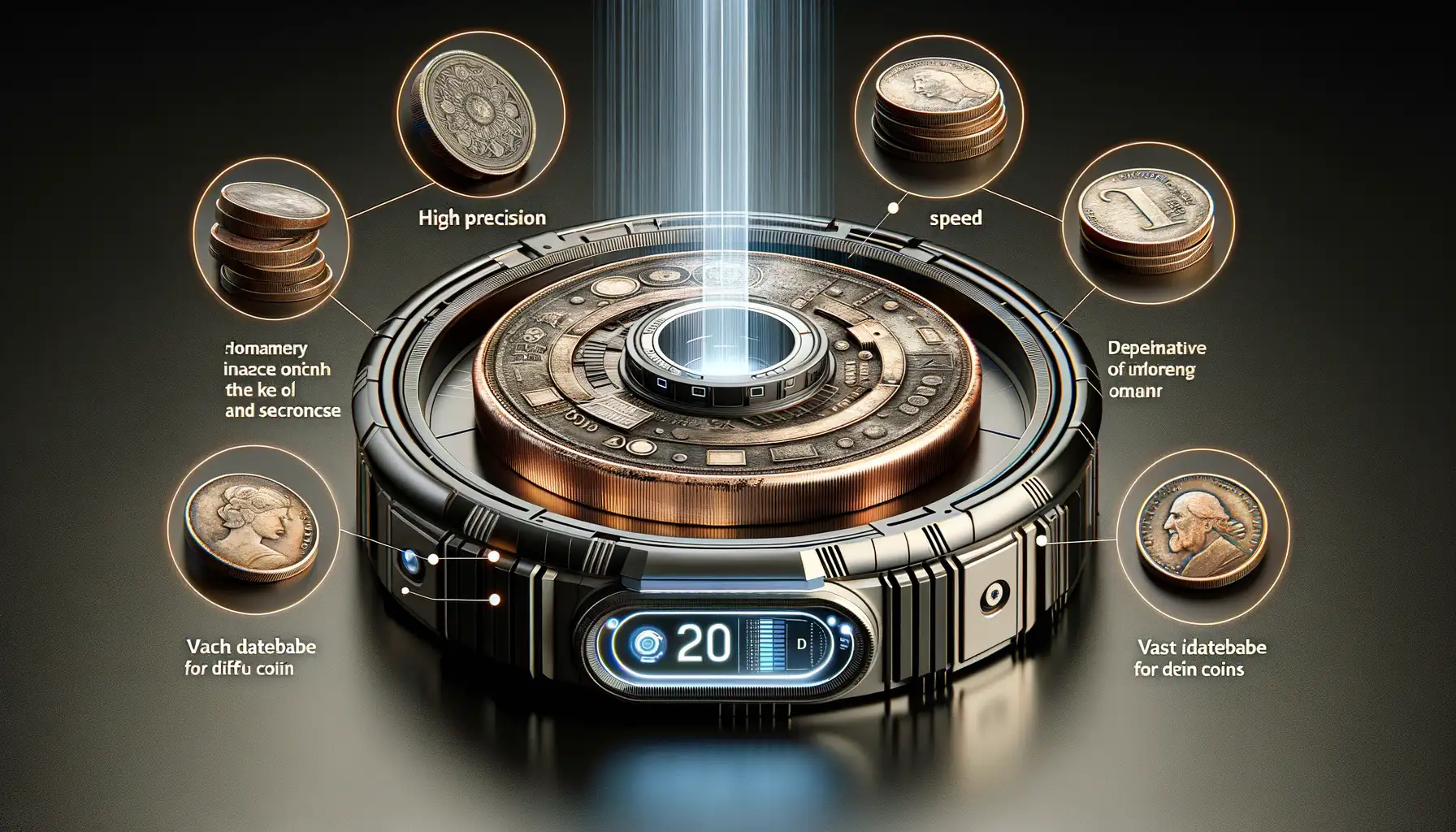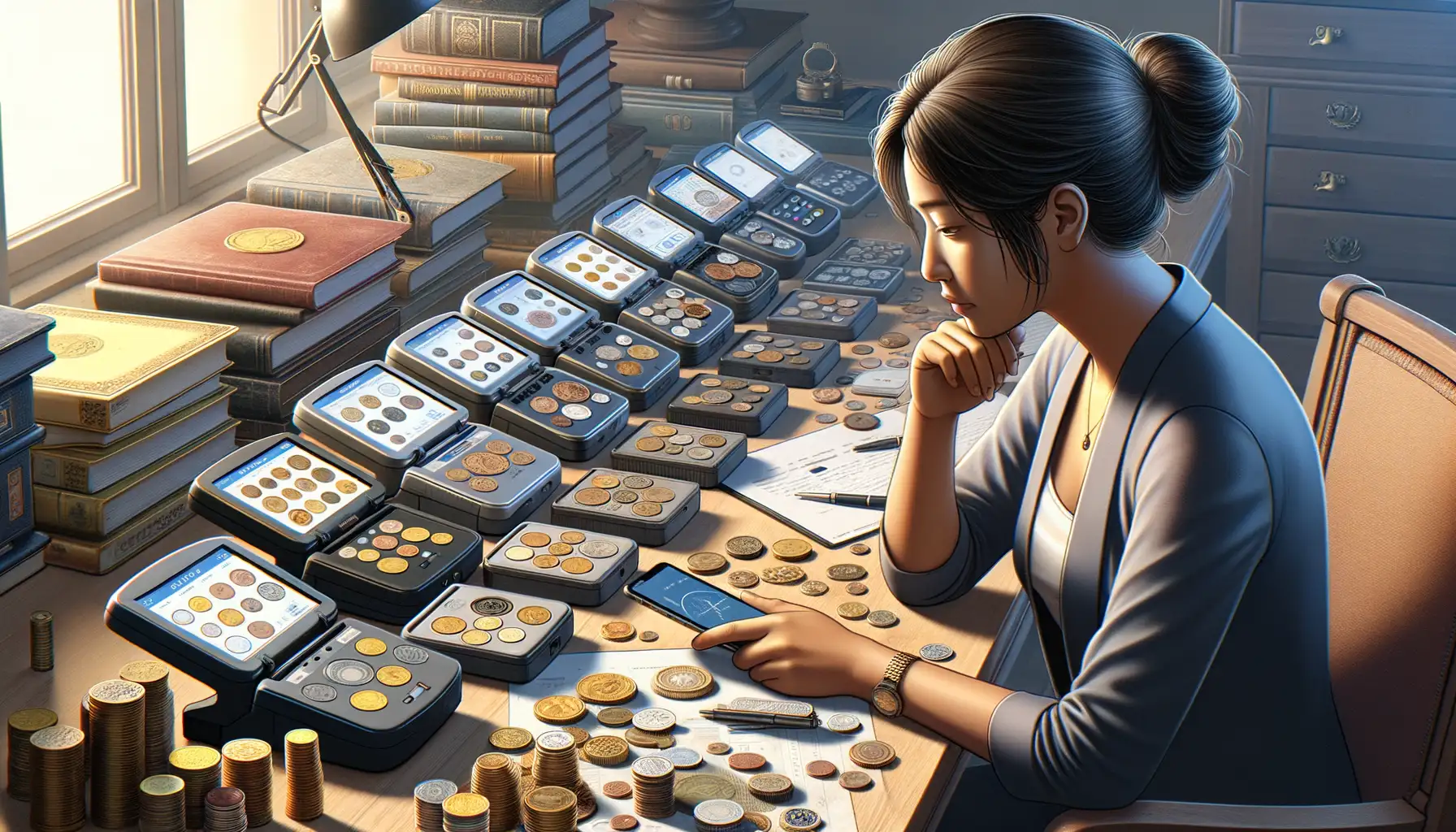Understanding How Coin ID Scanners Work
Peeking Behind the Curtain: The Magic of Coin ID Scanners
Imagine this: you’re holding a rare coin in your hand, its surface whispering stories of bygone eras. But what if you could decode those whispers with just a snap? Enter the world of Coin ID Scanners, where cutting-edge tech meets numismatic curiosity.
At their core, these scanners are like tiny detectives. They use advanced image recognition algorithms to analyze every nook and cranny of your coin’s design. From the intricate ridges on the edge to the gleaming details of mint marks, nothing escapes their sharp digital eyes. These devices compare the coin’s features against vast online databases, pulling up lightning-fast matches. Think of it as having access to a librarian who knows the location of every book in the world—and they work 24/7.
- Optical Scanning: High-resolution cameras zero in on each coin’s surface.
- Data Matching: Complex AI systems compare details like weight, diameter, and material composition.
- Historical Context: Many scanners even provide fascinating tidbits about your discovery’s origins.
It’s not just science—it’s a little bit of magic. Whether you’re a meticulous collector or a curious newbie, these devices turn every coin into a story waiting to be told.
Step-by-Step Guide to Effortless Coin Identification

Get Ready: Gather Your Coins and Tools
Imagine this: a quiet afternoon, a cup of coffee by your side, and a tray of coins gleaming under the light. Before diving in, make sure you’re prepared. Whether it’s a Roman denarius, a wheat penny, or that curious token from Grandpa’s drawer, having a plan makes all the difference. Dust off your coins (gently!) with a microfiber cloth to ensure every detail is visible. Trust me, smudges are the enemy of accuracy when scanning.
Next, fire up your coin ID scanner. This could be an app on your phone or a dedicated device—it’s like having a coin expert living in your pocket! Keep your background neutral; a plain white or black sheet works wonders to make those inscriptions pop.
- A clean workspace
- Proper lighting (natural light, if possible!)
- Your scanner charged and ready to roll
Snap, Scan, Discover!
Here’s where the magic happens! Place your coin on a flat surface, ensuring full visibility of its details—think date, mint mark, and design elements. Open your scanner and align your camera carefully, almost as if you’re framing a masterpiece. Click—your scan captures more than just an image; it starts unraveling history.
Watch the scanner pull up results faster than you can say “numismatics.” Maybe it’s the year a monarch took the throne, or the moment a new currency symbolized national independence. It’s not merely identification—it’s storytelling. Within moments, you’ll see matches for your coin’s origin, value, and rarity.
And just like that, you’ve turned a simple scan into a time machine.
Key Features and Benefits of Modern Coin ID Scanners

Revolutionizing Your Coin Collection Routine
Imagine holding a coin in your hand and knowing, within seconds, not just where it hails from but its exact year, history, and even potential value. Modern coin ID scanners make this once-impossible dream a thrilling reality. These devices have evolved into pocket-sized geniuses, transforming how collectors and enthusiasts approach their passion. Whether you’re identifying an ancient Roman denarius or a state quarter, a good scanner feels like having a personal numismatics expert on speed dial.
So, why are they so game-changing?
- Light-Speed Accuracy: No more squinting at faded inscriptions. Just scan, and the device handles the rest with laser-sharp precision.
- Massive Databases: Access to vast catalogs means you’re armed with treasure troves of information, right at your fingertips.
- Compact Convenience: Many come as smartphone apps or portable gadgets, meaning your lab is wherever you are.
The Secret Sauce: A Glimpse Into Hidden Features
What really fires up collectors is the bonus benefits packed into modern scanners. For instance, some models offer integrated value estimators—perfect for those “Is this worth something?” moments. Others include augmented reality functions, letting you view coins in 3D without pulling out gloves or damaging delicate surfaces. And don’t get me started on the automatic grading feature—a lifesaver that spares you debates with skeptical buyers or fellow hobbyists.
Common Mistakes to Avoid When Using Coin Scanners

Over-Reliance on Automation
It’s tempting to let your coin scanner do all the heavy lifting, but over-relying on automation can lead to oversight. Coin scanners are incredible tools, but they aren’t psychic! They can misread a worn-out mint mark or struggle with uniquely struck coins. Always double-check the scanner’s results, especially for high-value coins. Think of your scanner as a seasoned assistant, not the master appraiser.
For example, when scanning an old Roman coin, the scanner might provide a partial match due to corrosion obscuring the inscription. In such cases, cross-referencing its suggestion with a reliable catalog is your safety net.
Ignoring Proper Preparation
Before even turning your scanner on, ask yourself: Have you set up for success? A dirty, smudged coin can trip up even the most sophisticated software. Here are some missteps to avoid:
- Scanning coins without cleaning them gently – dust and grime can confuse imaging systems.
- Placing coins in poor lighting or at awkward angles, which leads to incomplete reads.
- Skipping your scanner’s calibration – yes, it’s tedious, but it’s non-negotiable for accuracy.
Here’s a quick fix: Use a soft microfiber cloth to clean your coins and scan in a well-lit area. Treat this process like setting up the perfect selfie—your scanner deserves good lighting too!
Choosing the Best Coin ID Scanner for Your Needs

Finding Your Perfect Coin Scanning Companion
Choosing the right coin ID scanner is like picking the ideal travel buddy—you need one that matches your pace and speaks your language. Whether you’re a seasoned collector with a treasure chest of ancient coins or a curious beginner eyeing your first find, the right scanner can transform your experience from frustrating guesswork to triumphant discovery.
Think about your goals: Are you diving into numismatics as a serious hobby? Or simply want to identify a handful of mysterious coins in grandpa’s collection? For those just starting out, a straightforward app-based scanner might suffice. But if you’re cataloging rare finds, a scanner with advanced AI recognition and detailed historical data is your go-to.
- Budget: Look for value, but don’t skimp on accuracy.
- Compatibility: Check if it works with your smartphone or desktop.
- Database Size: Bigger databases mean faster matches for obscure coins.
Remember, the best tool isn’t always the priciest—it’s the one that clicks with your needs. It’s like finding the perfect pair of shoes; fit and function come first! Happy hunting, coin champion.




